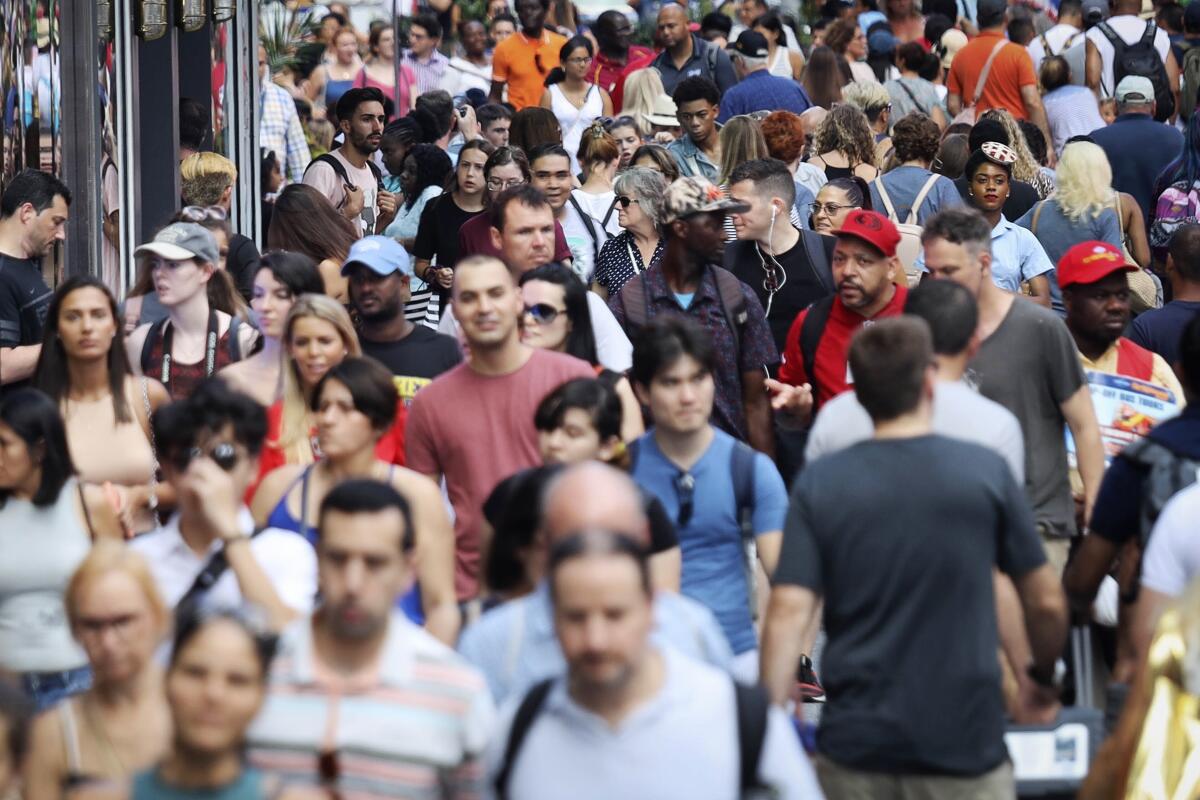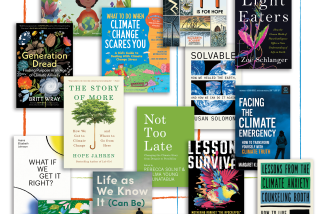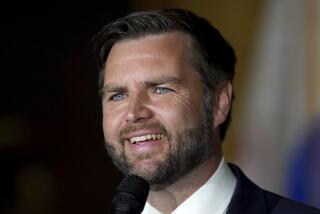Op-Ed: The complex link between population decline and a warming planet

It’s time to stop blaming overpopulation for our environmental woes and start looking at the factors that really matter — resource consumption and toxic exposure as population growth and fertility rates show downward trends.
U.S. and global populations are both growing at slower rates. In the period between July 2019 and July 2020 alone, the growth rate in the U.S. had slowed to just 0.35%, the slowest recorded since at least 1900. And this isn’t just because of a COVID-19 baby bust. Rather, this is a part of a long-term trend, decades in the making.
In 2010, births had fallen 3% from 2009, according to the Centers for Disease Control and Prevention. The total fertility rate (number of births over the course of a woman’s lifetime) was down 4%, and teen birth rates fell 10%, the sharpest drop in more than 70 years.
Global population growth, which has stabilized, is also heading toward decline. According to the United Nations population division, the world’s population is growing at a slower rate than at any time since 1950, and will level off around 2100. A 2020 study suggests that global population will probably reach its peak four decades earlier than what the U.N. projected.
In any case, age structures are already shifting markedly. As of 2018, people over 65 outnumbered children under 5 worldwide for the first time in history. While the pace is uneven, the population story of the 21st century will be one of global graying, rather than significant global growth.
Yet despite slower growth, we are still speeding toward environmental catastrophe. At the same time that human fertility rates were decreasing, greenhouse emissions all over the planet were rising steadily, hitting record levels in 2019. A U.N. report on global greenhouse gas emissions found that the richest 1% of people on Earth were responsible for more than double the number of greenhouse gas emissions of the poorest 50%. To comply with the Paris agreement, the ultra-rich would need to decrease their greenhouse gas emitting behaviors by a factor of 30.
The link between population and climate change is broken. In both China and the U.S. — the top two emitters of greenhouse emissions — the average woman gives birth to 1.6 children in her lifetime, below the 2.1 children needed to replace herself and her partner.
There are several factors behind the fertility slowdown. Women’s voluntary access to contraceptives — alongside other reproductive health services — plays a major role, as well as formal education and opportunities to earn an income outside of the household.
But researchers also point to another concern: Infertility may be on the rise. The rate of pregnancy loss due to miscarriage, stillbirth and ectopic pregnancy among women of all ages in the U.S. has been rising at a rate of 1% per year between 1990 and 2011. Further, an analysis of 185 studies looking at close to 43,000 men between 1973 and 2011 found that total sperm counts had decreased by almost 60%. Researchers aren’t entirely certain why — and some researchers question whether sperm count even impacts fertility —
but some evidence demonstrates that exposure to hormone-disrupting chemicals, like phthalates (which make plastics flexible), play a role in disrupting fertility.
There’s something else to consider: Young people are simply having less sex, with fewer partners, and are having sex for the first time at later ages compared with earlier generations. Some applaud this change for reducing teen pregnancy in the U.S. But it could signal a waning desire to have children on a warming planet.
Multiple surveys have found this phenomenon, showing that climate anxiety is on the rise, and with it, a fear of bringing babies into a world whose future isn’t so rosy. My own interviews with diverse young people between the ages of 22 and 34 reveal that racial violence and climate change compete as the two main reasons they cite for being either deeply ambivalent about or outright opposed to becoming parents in the future.
These very real social and environmental problems have intensified as population growth rates have declined. This alone demonstrates that stabilizing population size isn’t a panacea. Social and environmental problems won’t solve themselves, regardless of the number of people on Earth.
Jade S. Sasser is an associate professor of Gender and Sexuality Studies at UC Riverside. She is the author of “On Infertile Ground: Population Control and Women’s Rights in the Era of Climate Change.”
More to Read
A cure for the common opinion
Get thought-provoking perspectives with our weekly newsletter.
You may occasionally receive promotional content from the Los Angeles Times.










